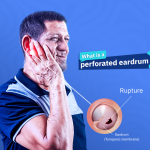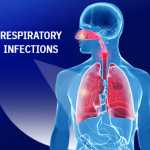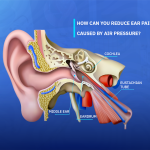Eustachian Tube
Eustachian tube is one of the vital organs in the body, despite its small size. It is an essential part of the middle ear, connecting the ear to the nose and throat. The Eustachian tube plays a critical role in maintaining pressure balance within the ear and ensuring clear hearing. In addition to that, it helps drain fluids and air from the middle ear, which contributes significantly to overall ear health.
In this article, we will explore the role of the Eustachian tube and its importance in maintaining ear health, as well as how its function can be affected in certain situations.
- What is the Eustachian tube?
- What’s the difference between the Eustachian tube in children and adults?
- Causes of Eustachian tube blockage
- Symptoms of Eustachian tube blockage
- How is Eustachian tube dysfunction diagnosed?
- Treatment for Eustachian tube blockage
- Tips for living with Eustachian tube blockage
What is the Eustachian tube?
The Eustachian tube, named after the Italian anatomist Bartolomeo Eustachio, is a cartilaginous and fibrous tube that connects the middle ear (located behind the eardrum) to the nasopharynx. Also known as the pharyngotympanic tube, it measures approximately 36 mm in length and 2–3 mm in width. The Eustachian tube plays a vital role in enhancing sound transmission in the middle ear and balancing pressure inside it. It is usually closed and opens in response to jaw movement and swallowing, such as during chewing or swallowing.
Structurally, the Eustachian tube consists of two parts: the anterior lower bony portion and the posterior upper cartilaginous portion. It contains cartilage, a mucous layer, and is supported by surrounding soft tissues, including the maxillary sinus cavity and nearby muscles such as the tensor veli palatini, levator veli palatini, pharyngeal muscles, and the tensor tympani muscle.
The Eustachian tube helps regulate ear pressure to match external air pressure. It also assists in draining excess fluids and mucus from the middle ear through the cilia and mucosal folds it contains, allowing them to pass into the throat for elimination. This process protects the middle ear from blockages or infections, as the Eustachian tube is lined with columnar ciliated epithelial cells. Additionally, it contributes to proper sound transmission through the middle ear.
What’s the difference between the Eustachian tube in children and adults?
Children between the ages of 1 to 6 are more prone to dysfunction in this part of the ear, as the tube and the muscles that control it are not yet fully developed. Additionally, enlarged adenoids can obstruct its opening.
Interestingly, the anatomical structure in infants and young children is more horizontal compared to adults, where it typically slopes downward from the middle ear. For this reason, infants should be bottle-fed with their heads elevated to prevent milk from reaching the middle ear. This horizontal orientation also allows bacteria to move more easily from the nose to the ear, making children more vulnerable to infections. Fortunately, most children over the age of six outgrow this issue, and ear infections tend to decrease significantly.
Causes of Eustachian tube blockage
Blockage of the Eustachian tube can occur due to several reasons, and some individuals may be more prone to this issue. While the blockage is often manageable at home, persistent symptoms require consultation with an ENT specialist.
Given the tube’s small size, various factors can lead to blockage and discomfort, including:
- Seasonal allergies and illnesses causing inflammation in the area during colds and flu.
- Sinus infections, which lead to inflammation and mucus buildup in the Eustachian tube.
- Gastroesophageal reflux, as stomach acid reaching the tube can cause swelling and narrowing.
- Obesity, where surrounding fat may compress the tubes and lead to blockage.
- Changes in altitude and pressure, such as during mountain climbing, scuba diving, skiing, or sudden elevation shifts on airplanes. Even riding elevators in tall buildings can trigger blockage symptoms.
Symptoms of Eustachian tube blockage
The duration of symptoms depends on the cause of the blockage. For example, if symptoms appear during altitude changes, they often subside upon descent. However, if caused by illness or infection, symptoms may persist longer. Common symptoms include:
- Feeling of fullness in the ear
- Changes in hearing, including a sensation of hearing loss
- Ringing in the ears (tinnitus)
- Ear pain
- Itching inside the ear
- Popping or crackling sounds in the ear
- Dizziness or balance issues
How is Eustachian tube dysfunction diagnosed?
Diagnosis of Eustachian tube dysfunction begins with a thorough ear examination. The doctor asks about pain, hearing changes, and other symptoms, then examines the ears closely, including the ear canals and passages.
Treatment for Eustachian tube blockage
Treatment depends on the cause, severity, and overall condition of the patient. Options include home remedies, medications, or surgery. Below are the main approaches:
Home remedies:
Mild symptoms often resolve through simple actions like chewing gum, yawning, or gently exhaling with the nose pinched and mouth open. Saline nasal sprays can also help clean the nasal passages.
Medications:
Specific drugs may be prescribed based on the case, and must be taken under medical supervision.
Surgical intervention:
Some cases require simple procedures to open the Eustachian tube, restore hearing, or relieve chronic ear pressure. These include:
Myringotomy:
Involves making a small incision in the eardrum to drain accumulated fluid, commonly used for glue ear.
Ear ventilation tubes:
A small tube is placed in the eardrum to ventilate the middle ear while the Eustachian tube recovers. The tube typically falls out on its own after 6 to 12 months, and further tubes aren’t needed unless the condition is chronic.
Eustachian tube balloon dilation:
A balloon catheter is inserted through the nose into the Eustachian tube and inflated for about two minutes before removal. This simple and safe procedure can effectively relieve blockage in certain cases.
Tips for living with Eustachian tube blockage
If you are experiencing Eustachian tube blockage, consider the following tips to manage symptoms:
- Avoid using decongestant nasal sprays for more than 3 days, as prolonged use can worsen ear congestion.
- Avoid diving activities when experiencing ear pressure issues to prevent pain or injury.
- Use extra pillows when sleeping to reduce pain from fluid buildup behind the eardrum.
- Keep the head and ears warm, and drink warm fluids to help alleviate symptoms during blockage.
In conclusion, The Eustachian tube is a vital component of the auditory and balance system. It plays a key role in regulating middle ear pressure and facilitating sound transmission. Understanding its structure and function helps identify issues such as dysfunction and middle ear infections. By recognizing the importance of the Eustachian tube, we can raise awareness about proper prevention and treatment methods for hearing-related issues, ultimately contributing to improved hearing health and overall quality of life.
